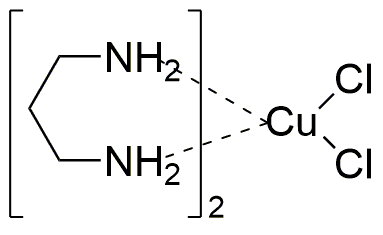Bis(1,3-propanediamine) copper(II) dichloride is widely utilized in research focused on:
- Catalysis: This compound serves as an effective catalyst in various chemical reactions, enhancing reaction rates and selectivity, particularly in organic synthesis.
- Coordination Chemistry: It is commonly used in studies involving coordination compounds, helping researchers explore metal-ligand interactions and their applications in materials science.
- Antimicrobial Applications: The compound exhibits antimicrobial properties, making it valuable in developing new antibacterial agents for use in healthcare and pharmaceuticals.
- Electrochemistry: It plays a significant role in electrochemical applications, particularly in the development of sensors and batteries, where it improves conductivity and stability.
- Biochemistry: Researchers utilize it in biochemical studies to investigate enzyme activity and protein interactions, contributing to advancements in drug discovery and development.
General Information
Properties
Safety and Regulations
Applications
Bis(1,3-propanediamine) copper(II) dichloride is widely utilized in research focused on:
- Catalysis: This compound serves as an effective catalyst in various chemical reactions, enhancing reaction rates and selectivity, particularly in organic synthesis.
- Coordination Chemistry: It is commonly used in studies involving coordination compounds, helping researchers explore metal-ligand interactions and their applications in materials science.
- Antimicrobial Applications: The compound exhibits antimicrobial properties, making it valuable in developing new antibacterial agents for use in healthcare and pharmaceuticals.
- Electrochemistry: It plays a significant role in electrochemical applications, particularly in the development of sensors and batteries, where it improves conductivity and stability.
- Biochemistry: Researchers utilize it in biochemical studies to investigate enzyme activity and protein interactions, contributing to advancements in drug discovery and development.
Documents
Safety Data Sheets (SDS)
The SDS provides comprehensive safety information on handling, storage, and disposal of the product.
Product Specification (PS)
The PS provides a comprehensive breakdown of the product’s properties, including chemical composition, physical state, purity, and storage requirements. It also details acceptable quality ranges and the product's intended applications.
Certificates of Analysis (COA)
Search for Certificates of Analysis (COA) by entering the products Lot Number. Lot and Batch Numbers can be found on a product’s label following the words ‘Lot’ or ‘Batch’.
Numéro de catalogue
Numéro de lot/série
Certificates Of Origin (COO)
This COO confirms the country where the product was manufactured, and also details the materials and components used in it and whether it is derived from natural, synthetic, or other specific sources. This certificate may be required for customs, trade, and regulatory compliance.
Numéro de catalogue
Numéro de lot/série
Safety Data Sheets (SDS)
The SDS provides comprehensive safety information on handling, storage, and disposal of the product.
DownloadProduct Specification (PS)
The PS provides a comprehensive breakdown of the product’s properties, including chemical composition, physical state, purity, and storage requirements. It also details acceptable quality ranges and the product's intended applications.
DownloadCertificates of Analysis (COA)
Search for Certificates of Analysis (COA) by entering the products Lot Number. Lot and Batch Numbers can be found on a product’s label following the words ‘Lot’ or ‘Batch’.
Numéro de catalogue
Numéro de lot/série
Certificates Of Origin (COO)
This COO confirms the country where the product was manufactured, and also details the materials and components used in it and whether it is derived from natural, synthetic, or other specific sources. This certificate may be required for customs, trade, and regulatory compliance.


